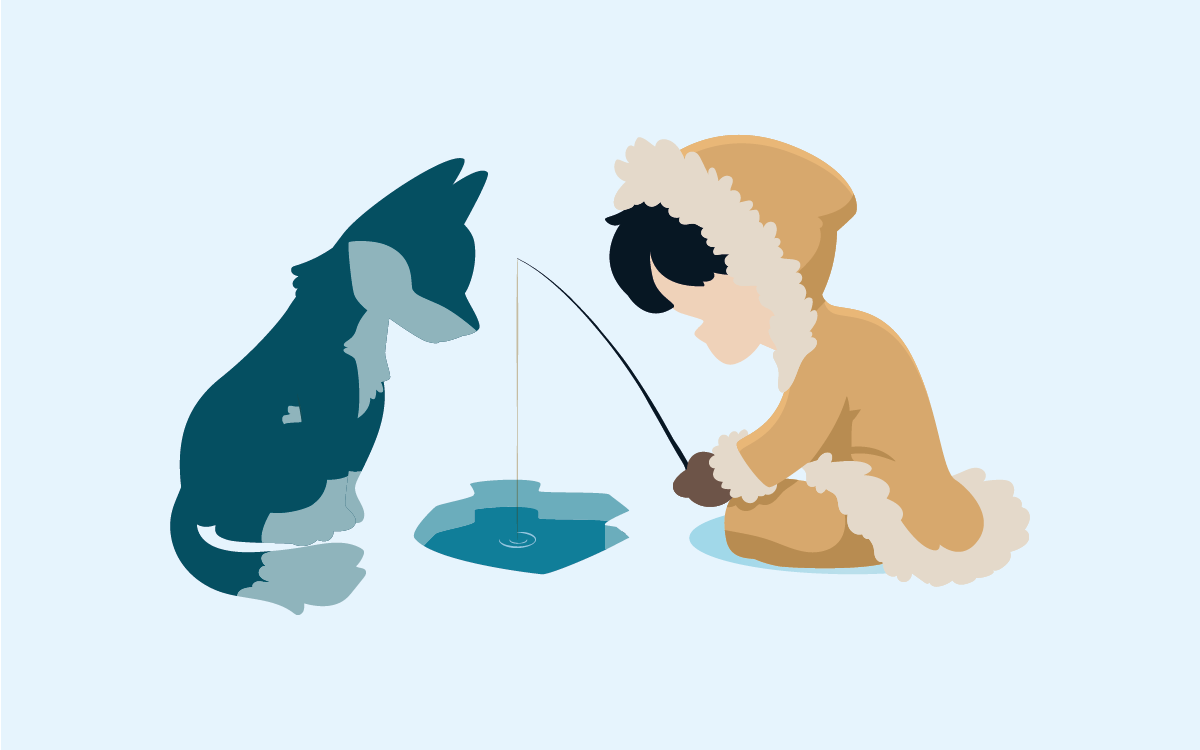Have you ever thought that the dogs of a region can reflect changes in human society?
After all, any element that interacts with and is modified by our species also serves as a form of human record.
Dogs, being so closely linked to us, also tell our story over time. Dogs and human history have many points in common.
A 2021 study focused on this history in the Siberian Arctic, one of the harshest and most isolated regions on the planet.
Siberia (not just the Arctic region but all of Siberia) has a population density of approximately three people per square kilometer. It covers more than 75% of Russia’s surface area but has only 33% of its population.
Life in Siberia
Dogs are another inseparable part of life in the Siberian Arctic.
It is believed that the coexistence between humans and dogs in these lands has lasted for 9500 years and continues to this day.
Even today, there are still communities in these areas that use dogs for herding, hunting, and sledding.
Interestingly, due to the extreme conditions and natural isolation, genetic mixing with other populations has been scarce. The genetics of Arctic dogs are ancient, and the crossbreeding of dogs in Siberia is rare.
However, it seems that dogs were more open in this sense than humans. For example, Siberian nomadic herders moved with their animals and allowed new mixtures.
In the history of Siberian dogs, they remained genetically separate from other breeds until 7000 years ago.
From that moment, due to their coexistence with people, European dogs and dogs from the Eurasian steppes began to be introduced to them. The frequency of these crossings increased 2000 years ago with the movement of populations.
A correlation has been found between the major introductions of new dogs and the significant social and technological advances in human societies.
The three main points of change seem to have occurred with the introduction of metallurgy, the incorporation of reindeer into transportation (both events approximately 2000 years ago), and the rise of reindeer herding 800 years ago.
Reindeer, another key element of Siberia.
Exchanging genes
It is believed that European dogs were incorporated for farm work, while steppe breeds were interested in herding tasks. This movement was not unidirectional.
If we study the ancestry of European dogs, they are a mix of lineages from the Near East and the Arctic as early as 10,900 years ago.
This would also indicate that Siberian dogs mixed with European dogs in periods prior to the reverse case. It was not until hundreds of years later that European breeds began to crossbreed with indigenous breeds in Siberia.
Although Europe, starting from 1800, went a bit crazy and began breeding new breeds, mostly for aesthetic purposes, at a frenetic pace. But that’s another topic.
An interesting fact is that, despite their relative proximity, Siberian dogs have hardly any genetic variants indicating crossbreeding with East Asian breeds. The genetic flow with them was anecdotal.
Arctic Dog Breeds
All this gene movement would have led, among other things, to the current Samoyed breed.
Calling it current is a bit ironic. The modern Samoyed differs little from the members of this breed from 2000 years ago.
Another example of a regional breed is the Chukotka sled dog, a breed that has been recorded for 1500 years. This dog was used to pull sleds, mainly for transporting food.
“But wait, isn’t that the Siberian Husky?”
No, although it is a common mistake. The Siberian Husky originates from Chukotka sled dogs that were exported to Alaska. The individuals that ended up in the United States and Canada gave rise to the current Siberian Huskies, which are smaller, faster, and have more endurance.
It is estimated that today there are 4000 sled dogs (not Huskies), although it is unknown how many are truly purebred.
Therefore, although we talk about changes in these animals, Siberia remains one of the regions in the world where dogs most closely resemble, both genetically and physically, the ancient breeds.
Looking at a Siberian dog is almost like looking at a dog with hundreds of years of history.
A similar case can be found in the Alaskan Malamute.
Now we move to another continent, as the Malamute also comes from the Arctic region, but in North America, where present-day Alaska is located.
Considered another of the oldest dog breeds, estimates suggest its direct ancestors may be 6000 years old. They crossed the Bering Strait from Siberia thousands of years ago, living with the Inuit, specifically the Mahlemut tribe, from whom they got their name.
These two groups lived so closely together that it is almost impossible to find a historical record of the Mahlemut that does not mention the dogs they had.
The last example we want to mention is the Finnish Spitz. This breed migrated with its human companions from central Russia to present-day Finland 3000 years ago.
The breed was more focused on hunting than transportation and was dangerously close to extinction in the late 1880s due to crossbreeding with other breeds.
Fortunately, a sportsman from Helsinki discovered some pure specimens and was so amazed by the breed that he dedicated himself to selecting non-mixed specimens to try to recover it. Almost all Finnish Spitzes today come from that effort 100 years ago to prevent the breed from disappearing.
Arctic dogs are the closest thing we will find to the wolves of the past that, at some point, decided that human beings were acceptable company.
If you want to see how much wolf your dog has, the Koko Genetics dog DNA test can take a look at their breeds.
There is another line of thought we can consider: how changes in dog breeds have been an indispensable tool in human evolution.
Could our ancestors have colonized such inhospitable environments without dogs by their side? Probably not.
Without dogs by our side, humans would be a more backward species and, above all, much unhappier.
